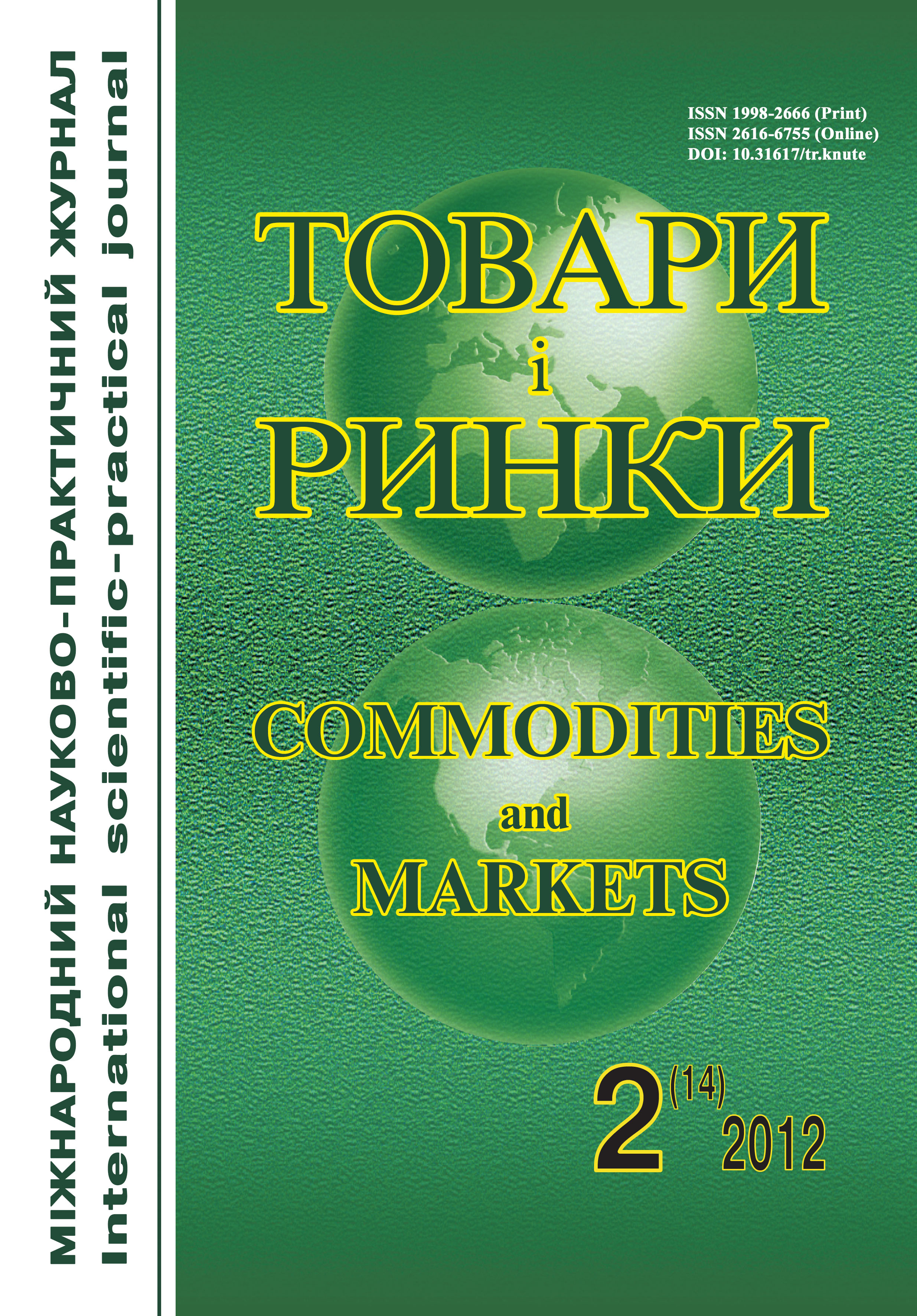Performance properties of epoxy-acrylic coating
Keywords:
aqueous dispersion polymers, film forming, operating properties, epoxy-acrylate dispersionAbstract
At the present time, Ukrainian varnish industry proceeds the transformation from the organic-based coating systems to water-based despersion. These coatings have improved fire, ecological and chemical safety, improved functional properties (outdoor stability, high water vapour permeability), decorative properties (easiness to colour, possibility of getting textured coatings) and others. The improvement of the composition of film-forming base of this materials for upgrading such parameters of coatings as hardness, wear-resistance is an actual problem. The solution of this problem lets to decrease the cost price of the coatings, assigned for usage in mechanical load environment and, in future, to replace the polyurethane-based materials.
The goal of this work is the determination of such material stability conditions and to discover the connection between the composition of film-forming base and coating properties. As a result of a research of new water dispersion paint based on combined epoxy-acrylic binders was created namely: during the combination of acrylic and epoxy polymers, the astabilization or thickening of the base was not observed, rheological constants are at level, respecting the bare styrene-acrylic dispersion. The operational properties of these compositions were determined. According to wear resistance materials are similar to counterparts on the basis of water dispersions of polyurethanes and compositions obtained can be recommend as more economical replacement of such materials. In general, the cost-price of composition production, including the cost of components is increased in comparison to bare acrylic only up to 30 %. From technology point of view, the compositions obtained are not different from existing systems. It is possible to use usual techniques for their application: brush, pneumatic, airless spraying. Thus, the expediency of the acrylic materials based on epoxy resin mixes using for the improvement of operational properties is substantiated. The epoxy-acrylic coatings obtained are characterized with increased hardness, wear-resistance, liquid and vapour water resistance, and are the base for obtaining the wide range of protective varnish paint coatings.
References
Мережко Н. Ринок лакофарбових матеріалів в Україні / Н. Мережко, Р. Домніченко // Міжнар. наук.-практ. журн. "Товари і ринки". — No 2 (12), 2011. — С. 5—13.
Всесторонний обзор существующих в Европе законодательных норм по ЛОС / Под ред. Э. Трейва. — Хэмпель : Таллинн, 2008. — 6 с.
Российский рынок ЛКМ за 9 месяцев 2011 г. / [Кофтюк В. А., Полякова М. Н., Бублик Л. С. и др.] // Лакокрасочные материалы и их применение. — No 11, 2011. — С. 4 — 11.
Билецкая Т. Будущие краски на акриловых водных дисперсиях / Т. Билецкая // Укр. лакокрасочный журн. — No 4. — 2009. — С. 56—59.
Казакова Е. Е. Водно-дисперсионные акриловые лакокрасочные материалы строительного назначения / Е. Е. Казакова, О. Н. Скороходова. — М. : Пейнт-Медиа, 2003. — 136 с.
Брок Т. Европейское руководство по лакокрасочным материалам / Т. Брок, М. Гротеклаус, Л. Мишке ; под ред. У. Цорля. — М. : Пейнт-медиа, 2007. — 548 с.
Muller B. Coating Formulation: An International Textbook / B. Muller, U. Poth. — Vincentz network GmbH & Co KG, 2006. — 290 p.
Пат. 2154081 Российская федерация, МПК7 C09D163/02, C09D5/02. Способ получения эпоксидной эмульсии / Манеров В. Б., Сапрыкин М. В., Куликова О. А. и др. ; заявитель и патентообладатель — ОАО "Ярославский НИИ лакокрасочной пром-сти", ОАО "Лакокраска". — 99100041/04, заявл. 12.01.1999, опубл. 10.08.2000, Бюл. No 21.
Waterborne epoxy systems: technology overview and new developments / [M. Rufo, D. Shah, W. Raymond et al]. — Air Products, 2002. — 11 p.
Wilson A. Waterborne coatings / A. Wilson, J. Nicholson, H. Prosser. — Springer, 1991. — 320 p.
ГОСТ 15140–78. Материалы лакокрасочные. Методы определения адгезии. — Введ. 01.01.1979. — М. : Изд-во стандартов, 1979. — 10 с.
ГОСТ 6806–73. Материалы лакокрасочные. Метод определения эластичности пленки при изгибе. — Введ. 01.07.1974. — М. : Изд-во стандартов, 1974. — 7 с.
ГОСТ 24621–91. Пластмассы и эбонит. Определение твердости при вдавливании с помощью дюрометра. — Введ. 01.01.1993. — М. : Изд-во стандартов, 1979. — 9 с.
ГОСТ 20811–75. Материалы лакокрасочные. Метод испытания покрытий на истирание. Метод А. — Введ. 01.01.1979. — М. : Изд-во стандартов, 1979. — 10 с.
ГОСТ 15088–83 Пластмассы. Метод определения температуры размягчения термопластов по Вика. — Введ. 01.01.1985. — М. : Изд-во стандартов, 1985. — 7 с.
Карякина М. И. Лабораторный практикум по техническому анализу и контролю производств лакокрасочных материалов и покрытий / М. И. Карякина. — М. : Химия, 1989. — 208 с.



